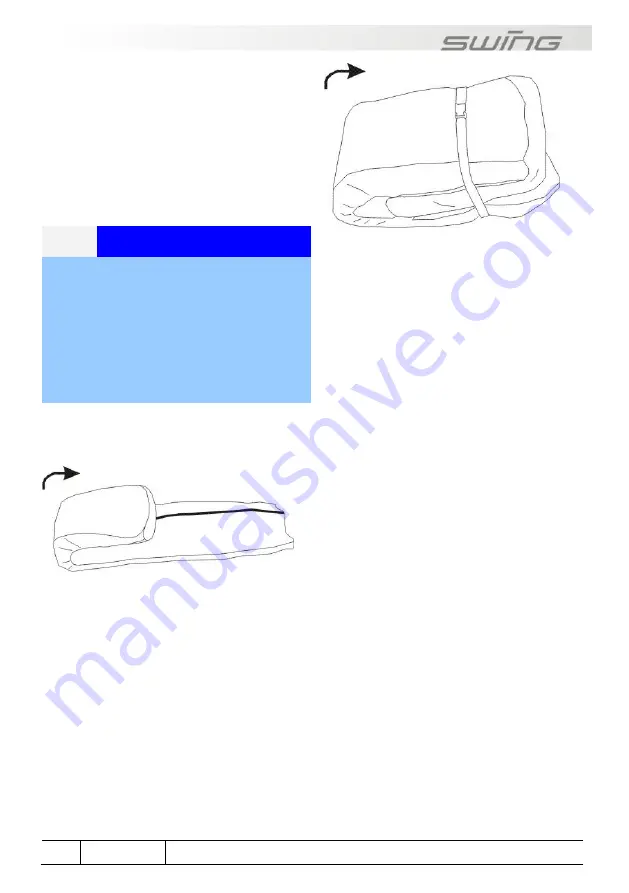
38
Section 08
Storing and looking after the paraglider
To do this, place the protection bag at
one end underneath the glider and then
place the cells and leading edges on top
of one another in turn until you reach
the other end of the glider.
Fasten the Velcro straps near the
leading edges, so that they do not slip,
and the two straps in the middle and at
the end of the glider.
PLEASE NOTE
Make sure that the leading edge
reinforcements lie flat and are not
bent or twisted by doing up the
Velcro too tightly.
After packing up, check once again
that the leading edge reinforcements
are lying flat and are not bent during
the following step.
Next, do up the zip, making sure that
none of the lines or fabric is caught in
the zip.
Fig. 14
Fold up the glider along the
length, with the first fold below the
leading
edge
reinforcements.
Pay
particular care not to bend any of the
rigid reinforcements!
Fig. 15
Fold the glider again. Then place
the compression strap around the glider
and fasten it by pulling gently. Make
sure that the glider is only loosely folded
and is not bent or compressed
excessively.
Storing and transporting the
glider
Even if your paraglider was completely
dry when it was packed up after the
final flight of the season, for long-term
storage you should if possible take it
out of the back pack and spread out the
canopy a little in a clean, dry place away
from direct light. If you do not have the
space to do this, then open the
backpack, internal bag and belt as much
as possible and avoid compressing it. It
must be stored at a temperature
between 10° and 25° C and in relative
humidity between 50 and 75%. Make
sure too that the paraglider is not
stored in a place where animals such as
mice or cats could use it as a place to
sleep.
Do not store the paraglider near any
chemicals. Petrol, for example, causes
the material to disintegrate and can
cause considerable damage to your
paraglider. When your equipment is in
the car boot, keep it as far away as
possible from any spare petrol cans or
oil containers.











































